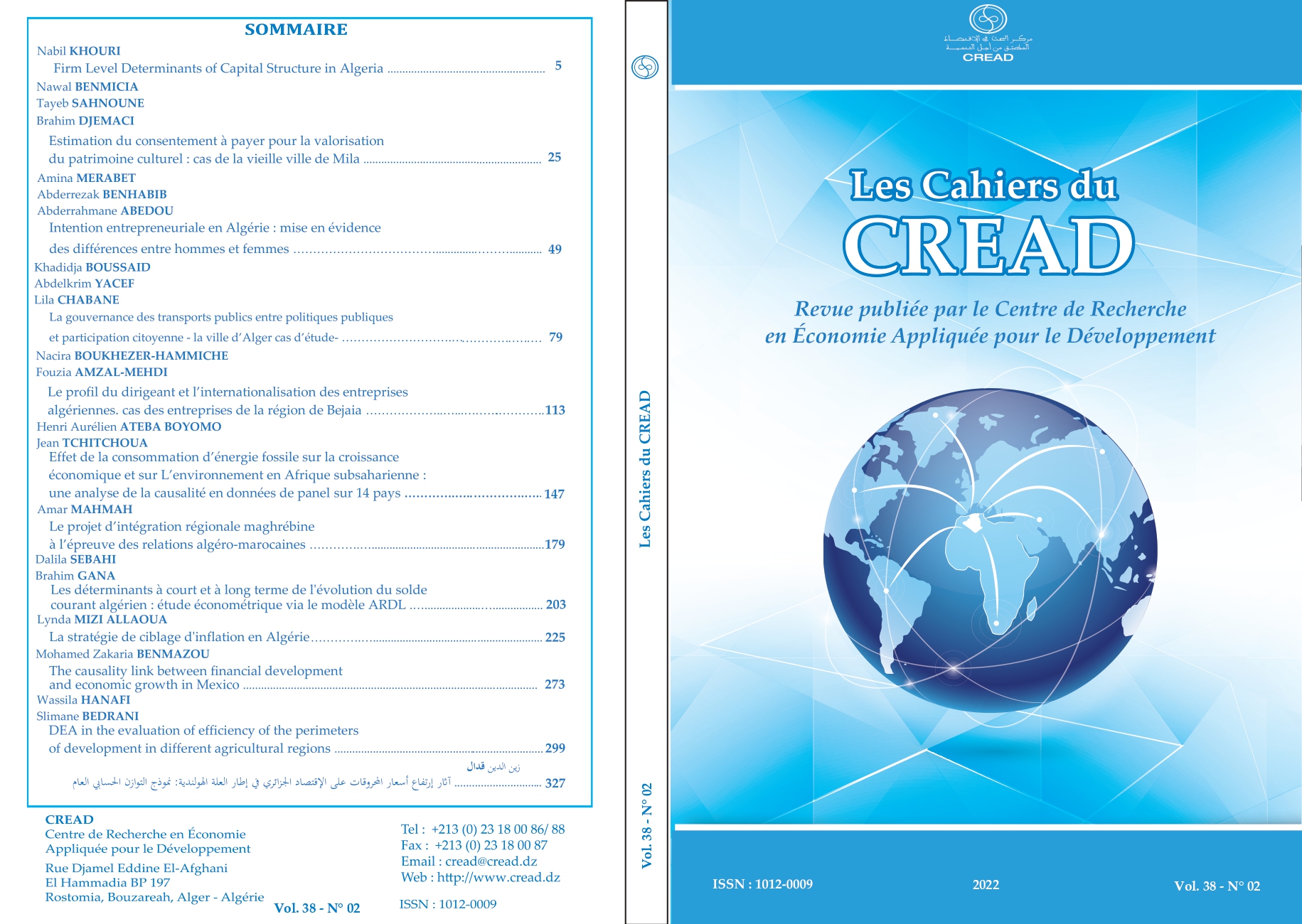Dea In The Evaluation Of Efficiency Of The Perimeters Of Development In Different Agricultural Regions
Main Article Content
Abstract
The purpose of this research is the ex post evaluation of the efficiency of agricultural development projects for the period 2000-2009. The analysis had been based upon a random sample of 244 agricultural perimeters spread over 15 wilayas among which 75 perimeters are located in the mountaineous zone, 98 in the steppe zone and 51 in the Sahara zone. The DEA (Data Envelopment Analysis) method had been used to calculate the efficiency of development projects. The selected outputs represent the number of developed hectares, and the number of created jobs, the input, will be represented by the total amount of expenses. The analysis uses an output-oriented approach with either constant or variable scale models. Our analysis shows that only the 9 perimeters (3 in the mountains, 4 in the steppe and 2 in the Sahara) which have reached the DEA efficiency boundary are operating at their optimal scale. The results have proved that the although the efficiency has a low score for the three agro-ecological zones, they can reach an increase in production of about 77% and 62 % on average, depending on whether we suppose the constant or the variation in return having a better use of the invested capital and higher returns
